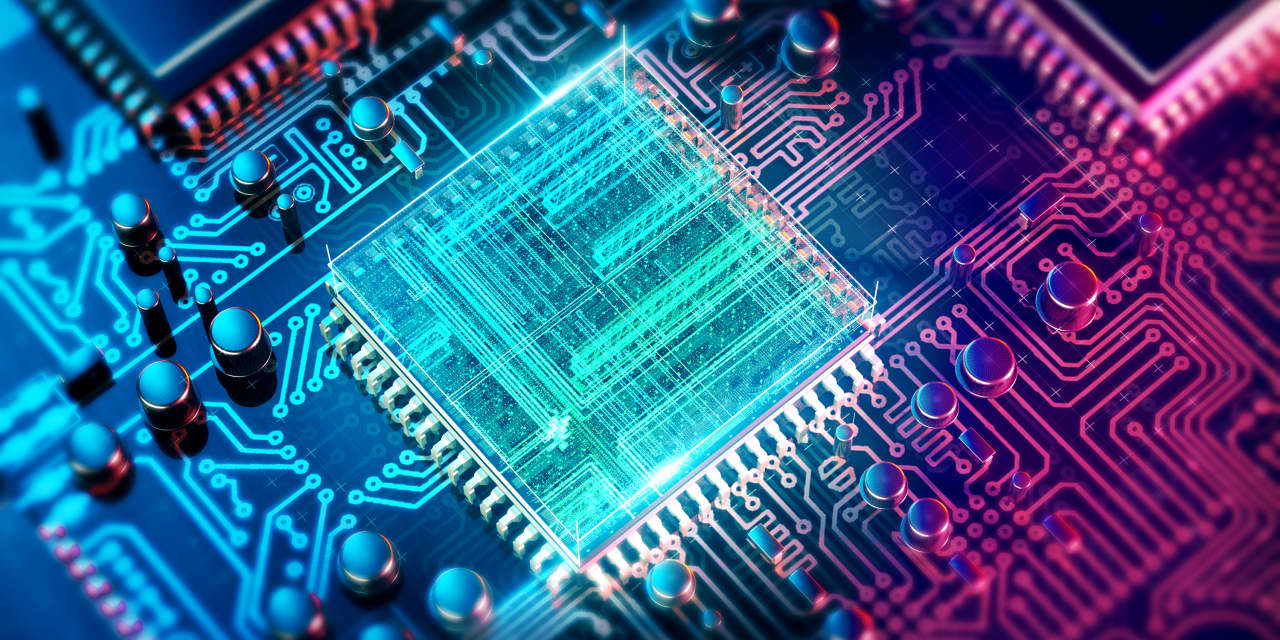This article is from the free weekly Barron’s Tech email newsletter. Sign up here to get it delivered directly to your inbox.
Reality Check. Everyone loves a good story. The latest one to get traction among media outlets this week was how China had somehow circumvented U.S. chip sanctions and achieved a significant manufacturing breakthrough. I saw one headline citing “China’s chip breakthrough” and another that said a new Huawei phone had “defeated U.S. chip sanctions.”
Some reports even suggested that China was now on its way to catching up to the West in making cutting-edge semiconductors.
But the significance of the latest phones made by China’s Huawei has been overstated. In fact, after a new round of restrictions that went into effect last week, China’s chip-making capabilities are actually likely to get worse—not better. (Barron’s covered the Huawei news in a more straightforward manner.)
Semiconductors made using more densely packed transistors (measured in nanometers ) have historically meant faster and more power-efficient chips. Following Huawei’s recent launch of its Mate 60 Pro smartphone, industry observers latched onto a report from research firm TechInsights noting that the phone’s main chip was manufactured on a 7-nanometer node by China’s largest domestic chip maker
Semiconductor Manufacturing International Corp.
(SMIC). They said it was a major advance for the country’s chip industry.
But China making 7nm semiconductors isn’t new. TechInsights noted that SMIC had used the process for a Bitcoin mining chip last year. And even assuming SMIC can achieve 7nm production for Huawei on a larger scale than before, it would only match what
Apple
began using for iPhone chips back in 2018. Being five years behind is an eternity in technology.
Huawei has been notably quiet about the details of its new smartphone. Typically, when a company comes out with a new device, it loudly markets improved processors. But this time, Huawei has been conspicuously silent for the Mate 60 Pro.
Huawei and SMIC didn’t respond to requests for comment about the manufacturing process for the new phones.
There are two fundamental problems for China going forward. First, the country faces an insurmountable wall to progress beyond 7nm, to 5nm and 3nm, which are fast becoming the industry standard in the U.S. These lower node processes require access to the most advanced chip-making machines from
ASML Holding’s
(ASML), known as extreme ultraviolet, or EUV, lithography. But sales of EUV to China have been restricted since 2019.
SMIC’s current capabilities could even start to deteriorate as it loses access to key parts. The chip maker is likely using older lithography systems known as deep ultraviolet, or DUV, to manufacture the 7nm chips. But starting Sept. 1, ASML came under additional export control restrictions for its DUV systems, making it more difficult for China to get the best DUV technology. SMIC’s existing DUV systems could break down if the company can’t get the parts and services it needs to maintain chip production.
Despite this week’s fanfare, not much has changed. China remains far behind the West in semiconductor manufacturing technology, and it’s unlikely to show much improvement soon.
This Week in Barron’s Tech
Write to Tae Kim at [email protected] or follow him on X at @firstadopter.
Read the full article here



